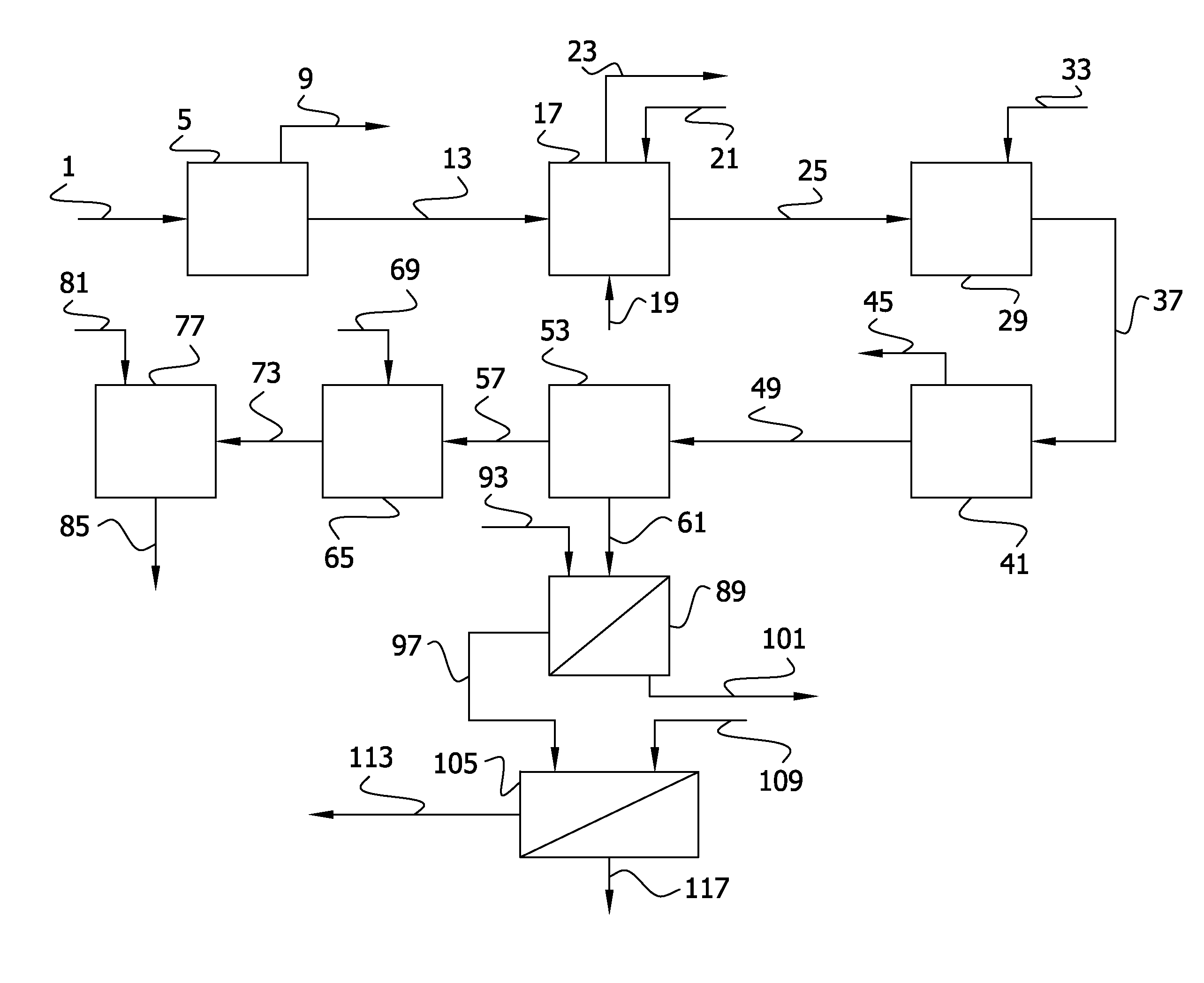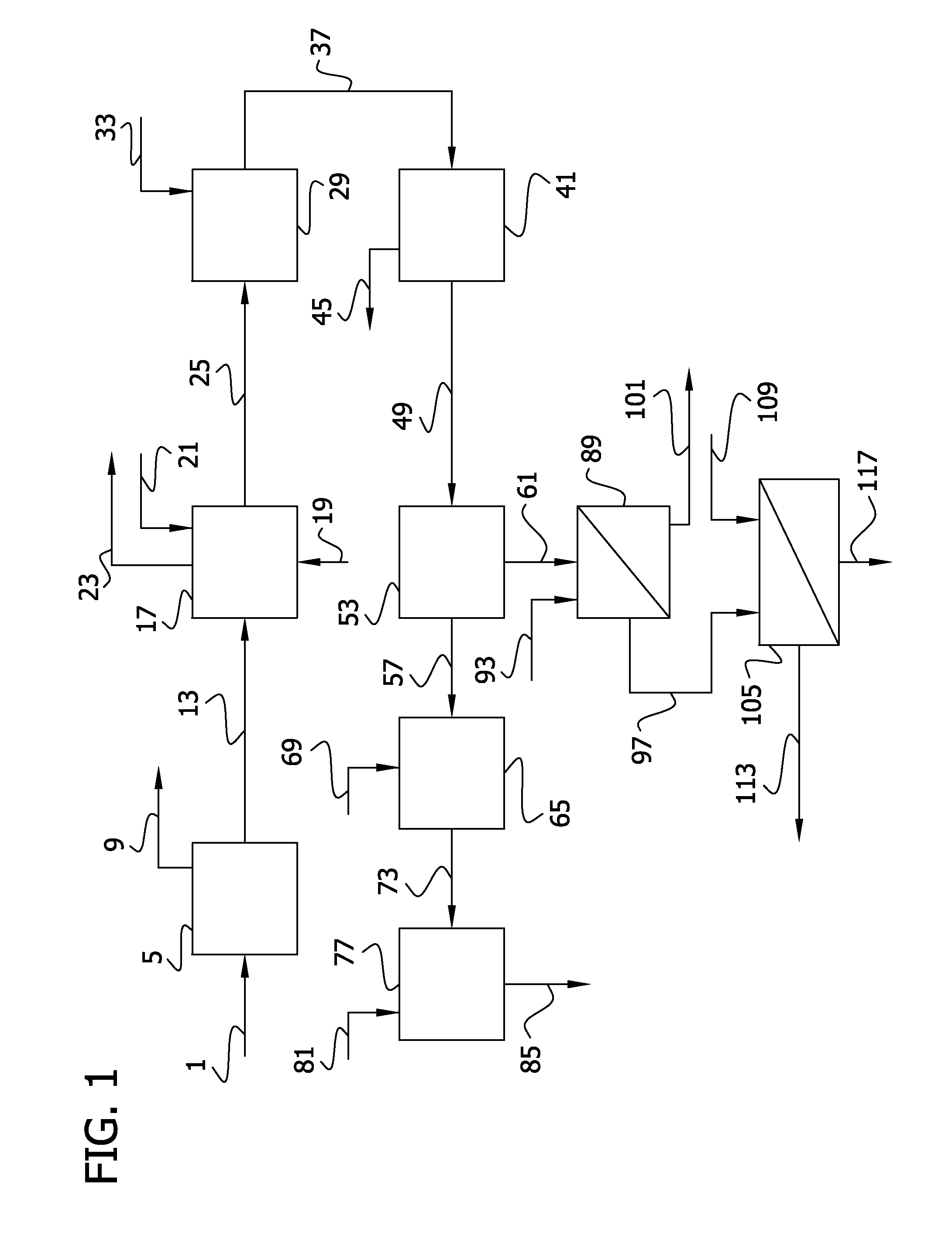Recovery of phosphorus values and salt impurities from aqueous waste streams
a technology of phosphorus values and salt impurities, which is applied in the direction of pulp liquor regeneration, separation processes, alkali metal carbonates, etc., can solve the problems of unfavorable agricultural applications utilizing glyphosate products containing such high levels of sodium chloride, and the inability to commercially practicable, deepwell injection of waste streams from glyphosate manufacture is not permitted
- Summary
- Abstract
- Description
- Claims
- Application Information
AI Technical Summary
Benefits of technology
Problems solved by technology
Method used
Image
Examples
example 1
Calcination of a Test Solution Representing Glyphosate Mother Liquor Under Acidic Conditions
[0104]This Example details calcination experiments utilizing a test solution representing acidic mother liquor formed during glyphosate manufacture. The experiments were undertaken to determine the effectiveness of calcination of the waste stream for conversion of organophosphorus compounds and inorganic salts to solids comprising phosphate, pyrophosphate, and inorganic salts (e.g., sodium chloride).
[0105]The test solutions were prepared by combining mother liquor solutions derived from crystallization of a product mixture generated during laboratory scale glyphosate production with other components to provide a target solution composition. The aqueous test solutions generally contained about 2 wt. % glyphosate, about 1 wt. % glycine, about 10 wt. % sodium chloride, phosphorous acid, and various other impurities (e.g., glyphosine, NMG, HMPA, AMPA, PMIDA). The pH of the test solution was appro...
example 2
Direct Combustion of a Test Solution Representing Glyphosate Mother Liquor Under Acidic Conditions
[0111]This Example details direct combustion experiments of an aqueous test solution prepared as described in Example 1.
[0112]Sodium chloride crystals (approx. 67.4 g) were introduced into the combustion chamber as a solids bed and test solution (approx. 40 g) was introduced into the solids bed. The temperature within the combustion chamber was increased until it reached at least approx. 750° C.
[0113]Additional test solution was introduced into the combustion chamber through a stainless steel nozzle. The outlet of the nozzle was positioned directly above the flame of a propane torch within the combustion chamber. Test solution was introduced into the combustion chamber at a rate of approximately 25 mL / min. Controlling the rate of air flow and solution feed rate avoided accumulation of water from the test solution passing through the flame collecting on the solids bed. A total of approx....
example 3
Phosphoric Acid Recovery via Liquid-Liquid Extractions from a Test Solution Representing Sodium Chloride-Depleted Glyphosate Mother Liquor
[0114]This example details liquid-liquid extraction for recovery of phosphate ions from a solution that may be prepared by calcination of a test solution as described in Example 1. The test solution contained approximately 73 wt. % PO43− ions and approximately 3 wt. % sodium chloride, balance water.
[0115]Test solution (approx. 50 g) and an organic solvent mixture (approx. 100 g) of tributyl phosphate / isopropyl ether (15 wt. % / 85 wt. %) were mixed in a beaker. Phase separation occurred after mixing for approximately 30 minutes; the organic layer was separated from the aqueous phase by a separation funnel. The organic layer contained about 14.5 wt. % PO43−. To this organic layer (117.8 g), water (approx. 12.75 g) was added and mixed for 15 minutes. After phase separation, the aqueous phase was separated and analyzed by HPLC. The aqueous phase contai...
PUM
| Property | Measurement | Unit |
|---|---|---|
| temperature | aaaaa | aaaaa |
| temperature | aaaaa | aaaaa |
| temperature | aaaaa | aaaaa |
Abstract
Description
Claims
Application Information
 Login to View More
Login to View More - R&D
- Intellectual Property
- Life Sciences
- Materials
- Tech Scout
- Unparalleled Data Quality
- Higher Quality Content
- 60% Fewer Hallucinations
Browse by: Latest US Patents, China's latest patents, Technical Efficacy Thesaurus, Application Domain, Technology Topic, Popular Technical Reports.
© 2025 PatSnap. All rights reserved.Legal|Privacy policy|Modern Slavery Act Transparency Statement|Sitemap|About US| Contact US: help@patsnap.com



